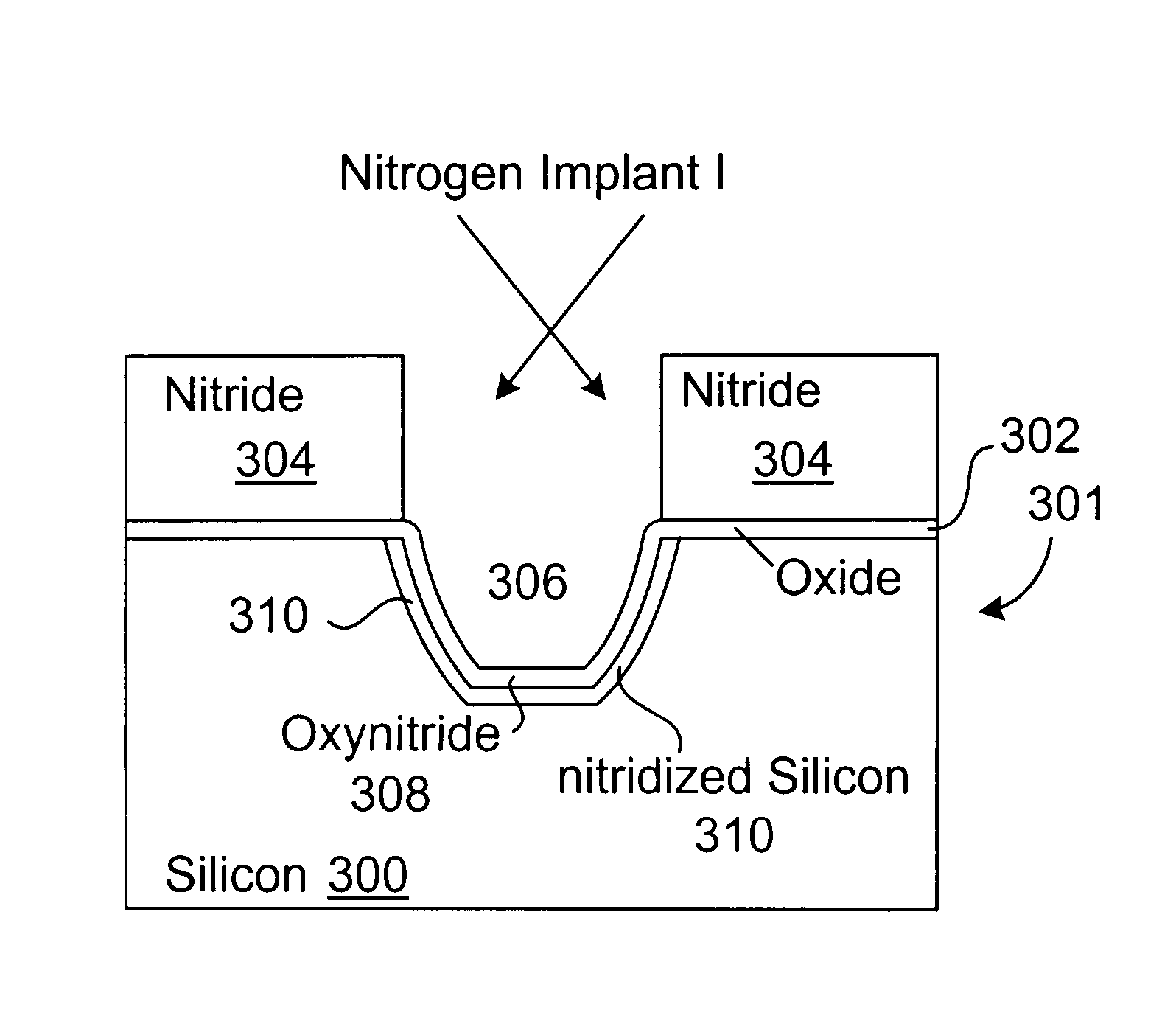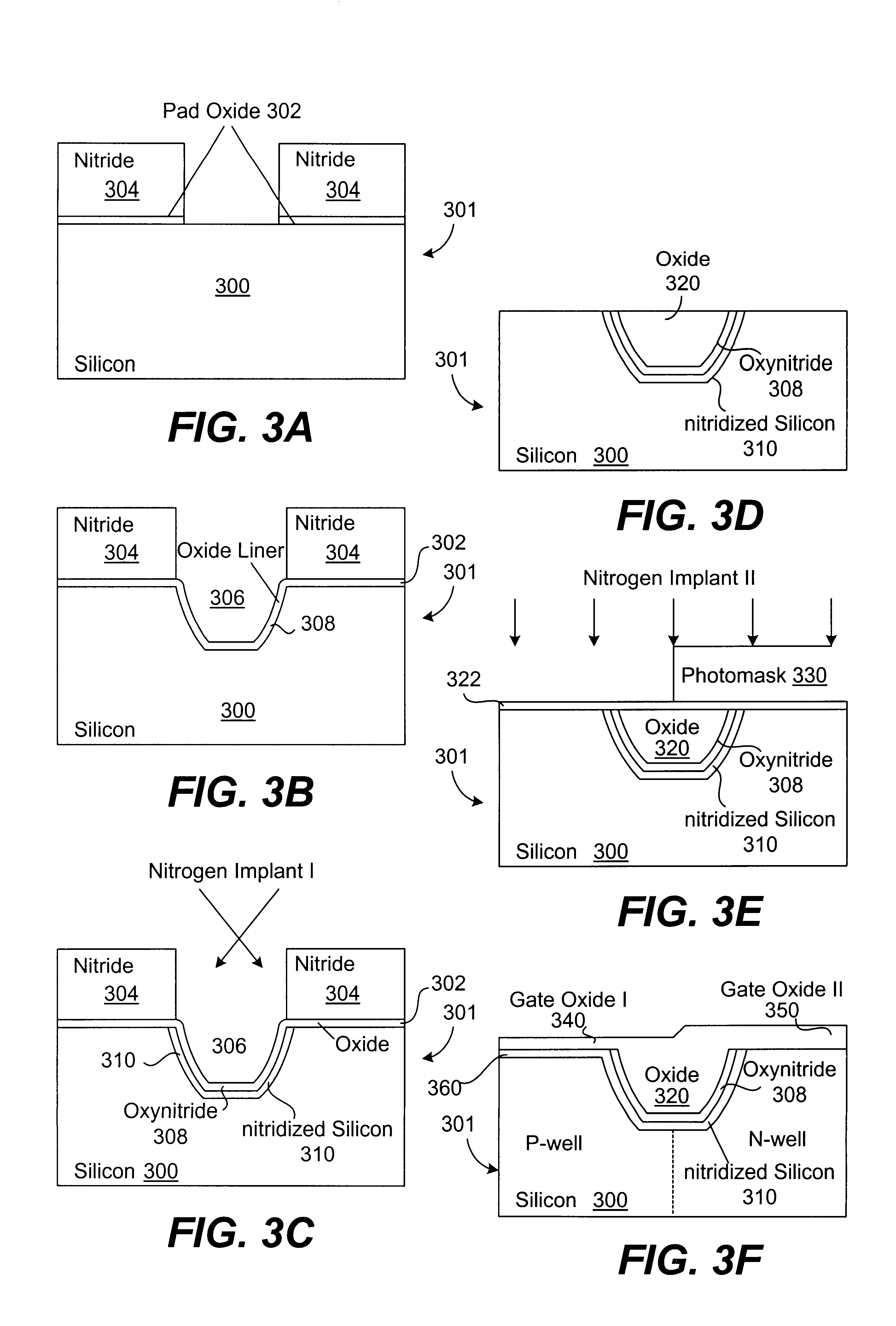Dual nitrogen implantation techniques for oxynitride formation in semiconductor devices
a technology of oxynitride and nitride, which is applied in the manufacturing of semiconductor/solid-state devices, basic electric elements, electric devices, etc., can solve the problems of limiting the scaling of technology, and sti being more complicated and costly than conventional locos isolation, so as to prevent the threshold voltage of the nmos device
- Summary
- Abstract
- Description
- Claims
- Application Information
AI Technical Summary
Benefits of technology
Problems solved by technology
Method used
Image
Examples
Embodiment Construction
The following example provides details concerning techniques and structures which demonstrate an implementation in accordance with the present invention. It should be understood the following is representative only, and that the invention is not limited by the detail set forth in this example.
Shallow trenches (0.253 .mu.m and 0.4 .mu.m deep) were etched into a silicon substrate using a nitride / oxide hard mask, and followed by a short high temperature liner oxidation. The trench was filled with a HDP-CVD, and followed by a CMP planarization down to the nitride layer, which was subsequently removed by hot phosphoric acid. Retrograde wells were done afterwards. A nitrogen-rich layer was introduced to the Si / SiO.sub.2 interface at trench edge by implanting nitrogen at 25 keV with a dose of 4e14 and 5e14 cm.sup.-2 through a screen oxide. Gate oxide growth followed. Then a polysilicon layer was deposited and doped. Standard back-end process was carried out to metal one.
The experimental da...
PUM
 Login to View More
Login to View More Abstract
Description
Claims
Application Information
 Login to View More
Login to View More - R&D
- Intellectual Property
- Life Sciences
- Materials
- Tech Scout
- Unparalleled Data Quality
- Higher Quality Content
- 60% Fewer Hallucinations
Browse by: Latest US Patents, China's latest patents, Technical Efficacy Thesaurus, Application Domain, Technology Topic, Popular Technical Reports.
© 2025 PatSnap. All rights reserved.Legal|Privacy policy|Modern Slavery Act Transparency Statement|Sitemap|About US| Contact US: help@patsnap.com



